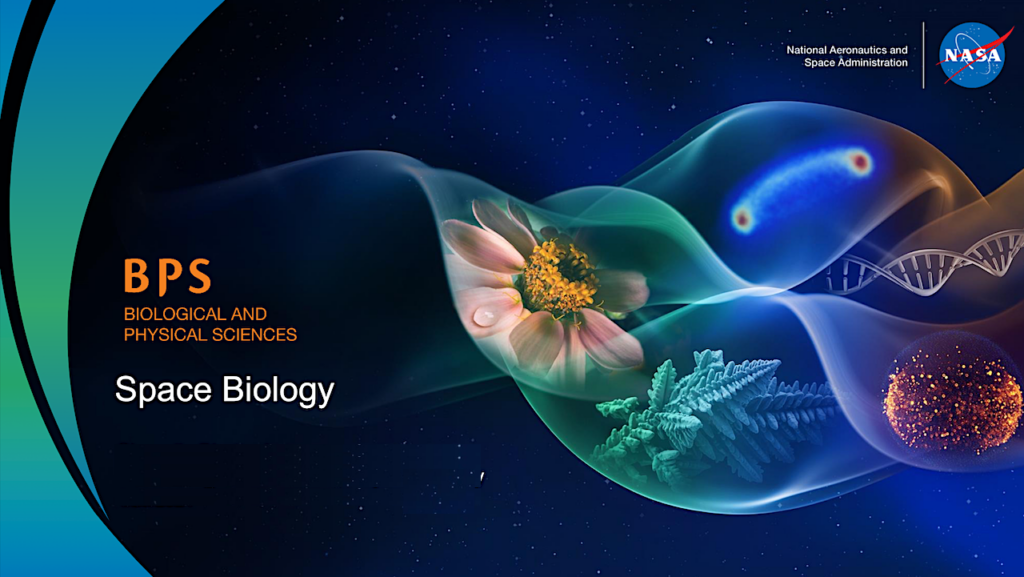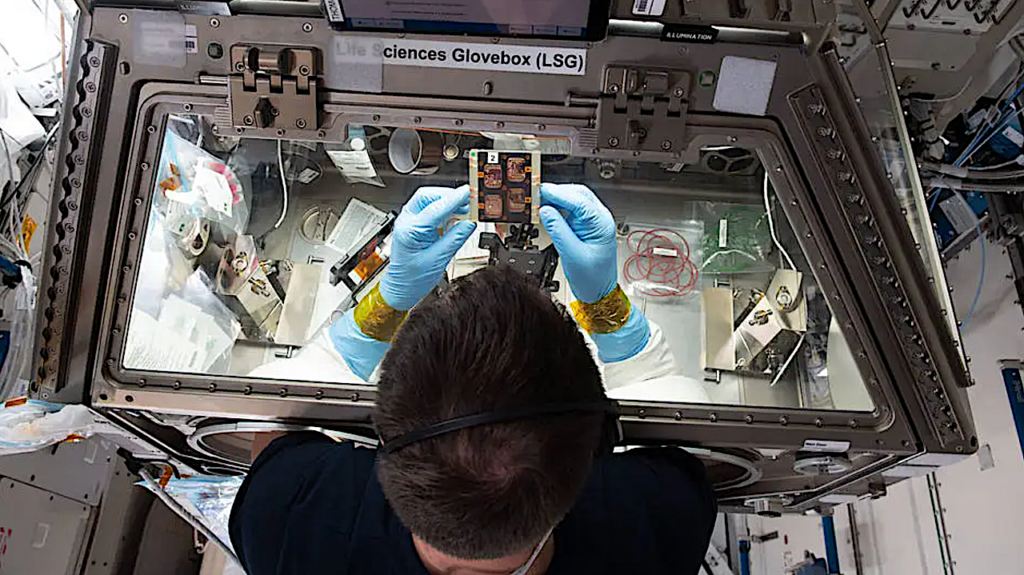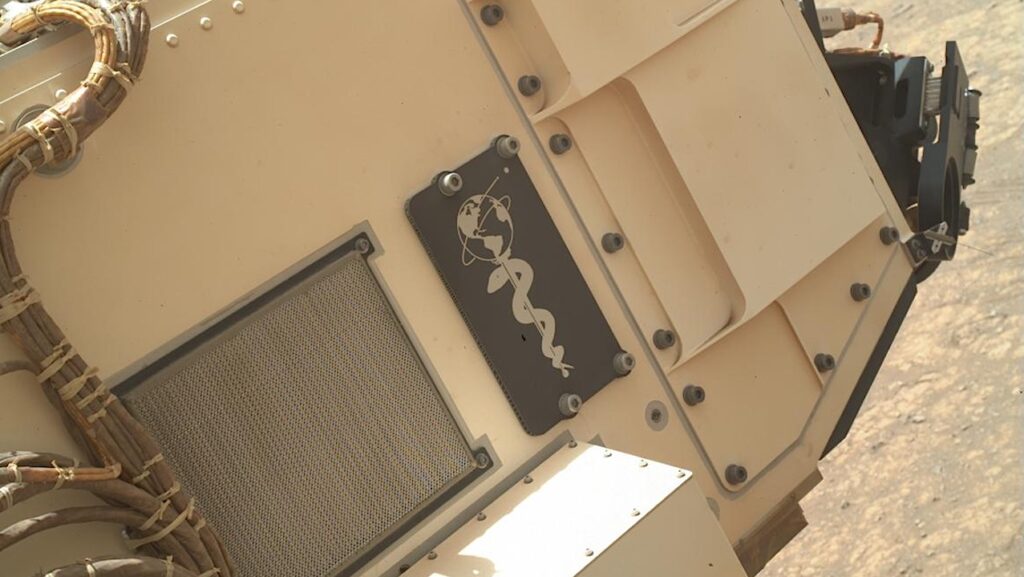NASA Selects Space Biology Research Proposals to Support Moon, Mars Exploration

NASA has awarded 15 grants for new space biology research designed to help the agency achieve its goals under the Artemis lunar exploration program.
Teams of investigators will use state-of-the-art genetic and other biological techniques to explore how life adapts and changes during spaceflight, and the results could help support human exploration of the Moon, and ultimately, Mars.
Selected microbiology investigations will study whether changes in bacteria, fungi, and viruses are likely to affect how they interact with crew and material surroundings aboard the International Space Station, with an emphasis on likelihood to cause infections and microbial evolution.
The plant studies will determine important characteristics of plants relevant to space-farming methods for exploration missions. Topics for investigation include how interactions between microbes in soil and on plants change in spaceflight and changes in plant disease defense mechanisms.
Animal physiology experiments will hone our understanding of cardiovascular changes in space. Other animal experiments in ground-based laboratories will further the development of techniques to reproduce the weight-bearing astronauts will experience on missions to the Moon and Mars.
These space biology investigations will be conducted by 15 investigators from 14 institutions in 10 states. Six of these awards are to investigators new to the Space Biology Program. When fully implemented, about $9 million will be awarded in fiscal years 2020-2023.
Awards for Microbiology Studies:
Jack Gilbert, Ph.D., University of California, San Diego
Quantifying selection for pathogenicity and antibiotic resistance in bacteria and fungi on the ISS – a microbial tracking study
Janet Jansson, Ph.D., Pacific Northwest National Laboratory, Richland, Washington
Dynamics of microbiomes in space (DynaMoS
Jiseon Yang, Ph.D., Arizona State University, Phoenix
Microbial social behavior and heritable genetic or epigenetic changes affected by the spaceflight environment: Understanding the evolution of microbial interactions during spaceflight
Clay Wang, Ph.D., University of Southern California, Los Angeles
Characterization of ISS microorganisms that assist in the decomposition of complex organic matter during spaceflight
Awards for Plant Biology Studies:
Robert Ferl, Ph.D., University of Florida, Gainesville
The role of Ca2+ signaling during the early events of plant adaptation to spaceflight
Anjali Iyer-Pascuzzi, Ph.D., Purdue University, West Lafayette, Indiana
Effect of spaceflight and simulated microgravity on plant defense responses
Christer Jansson, Ph.D., Pacific Northwest National Laboratory, Richland, Washington
C4 Photosynthesis in Space (C4Space)
Norman Lewis, Ph.D., Washington State University, Pullman
Dissecting beneficial plant-microbe interactions and their efficacy in the ISS spaceflight environment, a model study
Gioia Massa, Ph.D., NASA’s Kennedy Space Center, Florida
Spaceflight microbiome of a food crop grown using different substrate moisture levels
Patrick Masson, Ph.D., University of Wisconsin, Madison
Can polyamines mitigate plant stress response under microgravity conditions?
Sarah Wyatt, Ph.D., Ohio State University, Columbus
Spaceflight alters post-transcriptional regulation
Awards for Animal Biology Studies:
Michael Delp, Ph.D., Florida State University, Tallahassee
Effects of simulated microgravity and partial unloading on organ systems of the body
Foteini Mourkioti, Ph.D., University of Pennsylvania, Philadelphia
Telomere length regulation in muscle atrophy
Seward Rutkove, Ph.D., Beth Isreal Deaconess, Boston
Approaching gravity as a continuum: musculoskeletal effects of fractional reloading
Ritesh Tandon, Ph.D., University of Mississippi Medical Center, Jackson
Effect of space radiation on cytomegalovirus reactivation and lytic replication
The awards resulted from submissions to NASA Research Announcement NNH18ZTT001N-FG “Appendix B: Solicitation of Proposals for Flight and Ground Space Biology Research” sought research proposals for both ground-based and flight research investigations that will increase NASA’s understanding of how living systems acclimate to spaceflight to support human space exploration and/or promote scientific discovery. Investigators were invited to submit proposals that addressed one of the following four research emphases:
– Microbiology studies that will produce new understanding to augment and expand our knowledge of the Microbiology of the Built Environment (MoBE) in Space.
– Plant Biology studies in support of Human Space Exploration making maximal use of the capabilities on the space statoin to study environmental effects on plant growth and interactions with microbes and fungi.
– Animal Biology studies (vertebrate and invertebrate) in support of human space exploration.
– Studies designed to compare results and validity of microgravity “simulators” in parallel flight and ground-based studies.
This announcement provided funding opportunities to both individual principal investigators as well as investigator teams. The Space Biology Program is managed by the Space Life and Physical Sciences Research and Applications Division in NASA’s Human Exploration and Operations Mission Directorate at the agency’s headquarters in Washington.
Called to return to the Moon within five years, NASA’s lunar exploration plans are based on a two-phase approach: the first is focused on speed – landing on the Moon by 2024 – while the second will establish a sustained human lunar presence by 2028. The agency will use what we learn on the Moon to prepare for the next giant leap – sending astronauts to Mars.
For more information about NASA’s Moon to Mars exploration plans, visit: https://www.nasa.gov/moontomars








